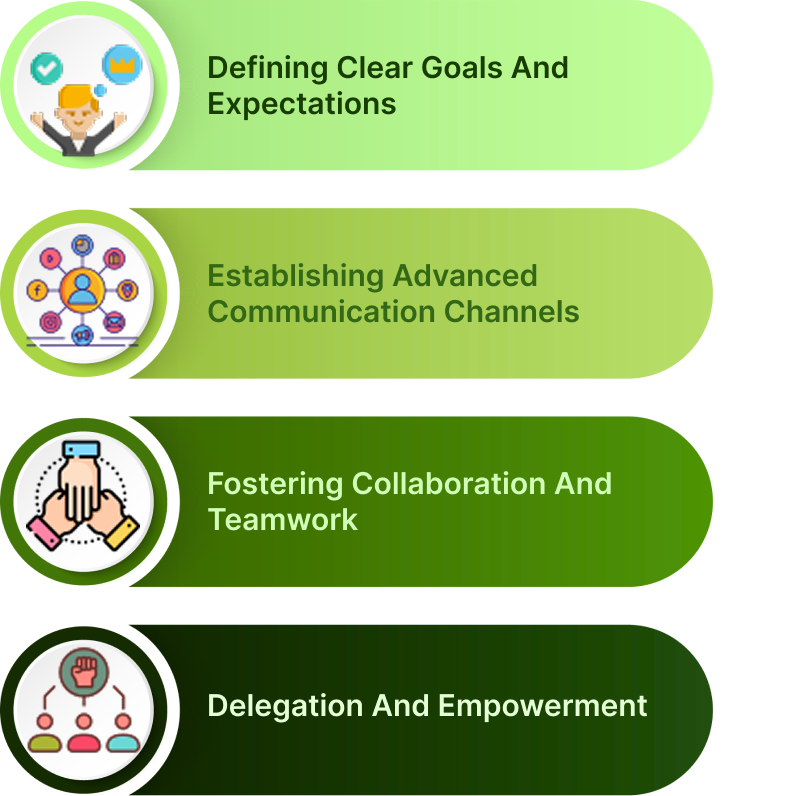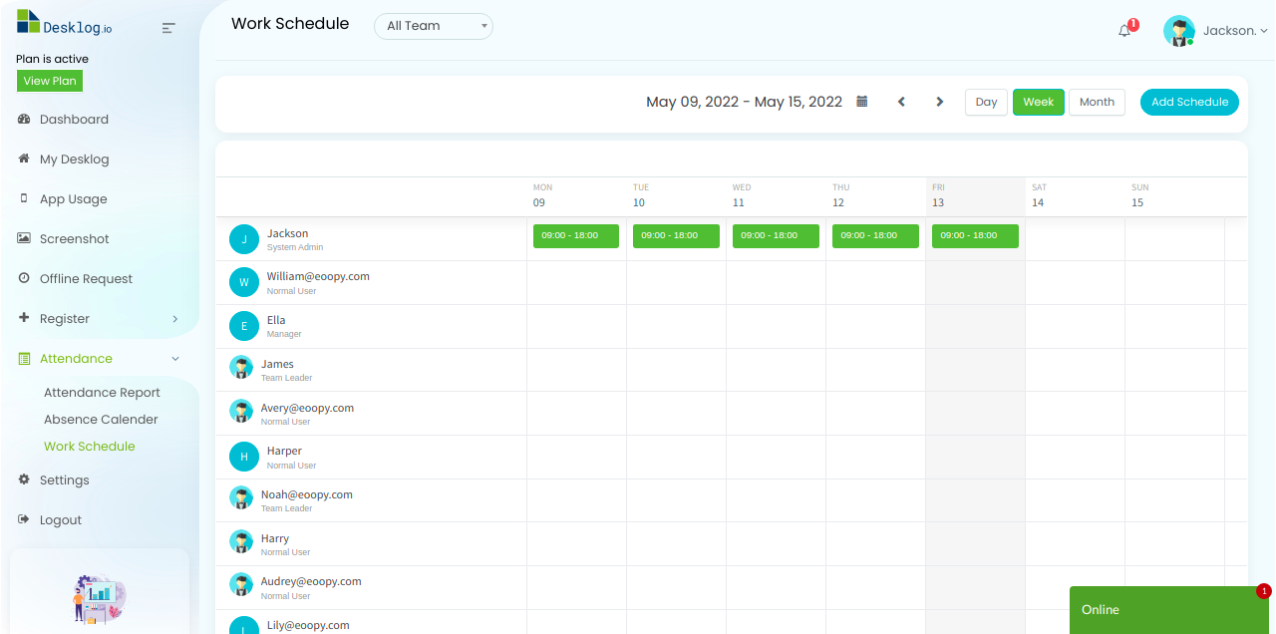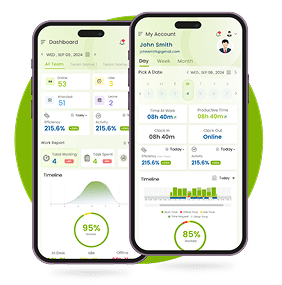Imagine time not as a resource to be managed but as a river to be sailed. The common wisdom tells us to paddle harder, to tighten our grip on the oars of discipline, and to chart our course with lists and schedules. But what if the real problem isn’t that we’re bad rowers? What if we’re just in the wrong boat?
In today’s workplace, the river flows fast and wide, fed by currents of constant connectivity and endless collaboration. Yet, the blame game persists. When someone misses a deadline, it’s a failure of character. When projects stall, we point fingers at poor time management, as if time were a stubborn adversary that could be conquered with enough willpower.
But here’s the twist: the enemy isn’t time. It’s how we think about time.
Instead of obsessing over personal hacks, like magical to-do lists or the mythical “Inbox Zero”, we need to rethink the entire system. Enter the time management matrix, not just as a trick, but as a lens to see the bigger picture. It helps us distinguish between what’s urgent and what’s important, revealing where we’re wasting time on the “fire drills” of life while ignoring the projects that truly matter.
And here’s where the future lies time tracking software isn’t just a watch; it’s a mirror. It reflects not just how much time we spend, but how we spend it, individually and as a team. It shows where we leak productivity, where we’re unintentionally drowning in distraction, and where our collective efforts are misaligned.
Because in the end, time management isn’t just a personal quest. It’s a team sport. The real productivity hack isn’t better self-discipline. Better systems. Better rivers. Better boats. And the key is not just steering our own course but navigating the currents together.
Foundational Principles of Effective Team Time Management


Defining Clear Goals and Expectations
Effective team management starts with setting clear goals and expectations. Without clarity, teams can become directionless, leading to inefficiency. The SMART goals framework, Specific, Measurable, Achievable, Relevant, and Time-bound, helps set clear, trackable objectives. For example, instead of “Improve customer service,” a SMART goal would be “Reduce customer complaints by 15% over the next quarter by enhancing response times.”
A team charter and mission statement further solidify purpose. A charter outlines objectives, roles, and norms, guiding daily operations, while a mission statement serves as a rallying cry, reflecting core values. For instance, a marketing team’s mission might be, “Deliver innovative content strategies to increase brand awareness and customer engagement.”
Aligning individual goals with organizational objectives fosters purpose and motivation. Regular performance reviews and goal-setting sessions, supported by frameworks like OKRs (Objectives and Key Results), help visualize how personal contributions drive broader success.Incorporating time mapping ensures tasks are aligned with timelines, while time boxing helps allocate focused periods for specific activities, boosting efficiency.

Establishing Advanced Communication Channels
Effective communication is the backbone of any successful team, and strong team time management improves its impact. Choosing the right tools is key: Slack or Microsoft Teams for quick updates, Zoom or Google Meet for formal meetings, and Desklog, Asana, or Monday.com for project tracking. These tools not only simplify communication but also optimize team time management by reducing unnecessary back-and-forths.
Email remains vital for formal communication, with clear expectations on response times to prevent delays and support efficient time management. Setting guidelines improves interactions, define response times, promote respectful, concise messaging, and establish virtual meeting norms like muting when not speaking. Clear, specific communication avoids misunderstandings, saving valuable time; for example, say, “Complete the budget report by Friday with Q2 projections and detailed expenses,” instead of, “Can you handle this?”
Promoting open, transparent communication builds trust and supports team time management by reducing the need for constant clarifications. Regular meetings, one-on-ones, and an open-door policy encourage feedback, while anonymous tools like Google Forms capture honest insights. Transparency fosters belonging, identifies issues early, and supports collaborative problem-solving, which directly contributes to more efficient time use.

Fostering Collaboration and Teamwork
Collaboration and teamwork are key to achieving complex goals, and effective team time management ensures these efforts are productive. Building team cohesion starts with activities like workshops, retreats, or informal lunches to strengthen relationships and trust, which can enhance collaborative efficiency. Recognition programs, through shout-outs, awards, or thank-you notes, boost morale and motivation, encouraging teams to manage their time more effectively in pursuit of shared goals.
Encouraging knowledge sharing and cross-functional collaboration fosters innovation while optimizing team time management. Team members can share expertise through presentations or “lunch and learn” sessions, while cross-departmental projects break down silos, allowing teams to tackle tasks more strategically. For example, product teams working with marketing and support ensure features meet customer needs, reducing time spent on rework and misaligned efforts.
Collaboration tools like Google Drive, SharePoint, Jira, or Monday.com support teamwork by enabling real-time document collaboration, tracking project progress, and identifying bottlenecks. Thoughtful use of these tools helps simplify workflows, eliminate redundancies, and keep projects on schedule, contributing significantly to team time management.

Delegation and Empowerment
Delegation and empowerment are key to building a high-performing team, and they play a crucial role in enhancing team time management. Effective delegation matches tasks to individuals based on their skills, interests, and growth goals, ensuring that team members work on what they do best, which saves time and increases productivity. Clear communication, detailing instructions, expectations, and deadlines, ensures clarity, while regular check-ins support progress without micromanaging, allowing team members to manage their time efficiently.
Empowerment goes beyond task assignment; it’s about giving team members the autonomy to make decisions and own their work, fostering engagement, motivation, and accountability. This autonomy helps individuals prioritize tasks effectively, contributing to better team time management. For example, assigning someone to lead a project fosters confidence and leadership skills, encouraging them to manage both their responsibilities and time effectively.
Avoiding micromanagement is crucial for morale and productivity. Instead of controlling every detail, focus on outcomes, trust your team, and provide the resources they need. Clear expectations and defined roles reduce the need for constant oversight, allowing teams to thrive independently and manage their time more efficiently.
Common Team Time Management Challenges
Managing Remote and Distributed Teams
Managing remote teams brings incredible opportunities for flexibility and access to global talent, but it also introduces unique challenges. From communication barriers to managing productivity across time zones, leaders must be proactive and strategic. Below are key problems faced in remote employee management and practical solutions that reflect current remote employee management insights.
Problem 1: Communication Barriers
Remote teams often face communication breakdowns due to the absence of in-person interaction. Without non-verbal cues, real-time feedback, or tone of voice, messages can easily be misinterpreted, leading to confusion and frustration.
Solution:
-
Diversify Communication Tools
Use Slack for quick chats, Zoom for real-time discussions, and email for formal documentation. This mix supports various communication styles and ensures nothing falls through the cracks.
- Set Clear Communication Norms
Establish guidelines for when to use each platform and set expectations for response times to reduce ambiguity.
- Use Visual Tools
Encourage screen sharing, diagrams, or recorded walkthroughs with tools like Loom or Miro to clarify complex ideas, particularly during async collaboration.
Problem 2: Building Trust and Accountability
Without daily check-ins or visual cues, managers might feel unsure about team progress, while remote employees may feel isolated or micromanaged. Building mutual trust becomes harder in distributed settings.
Solution:
- Use Transparent Tracking Tools
- Provide Autonomy with Clarity
- Regular Recognition and Feedback
Adopt the best remote employee time tracking software like Desklog, and project tools like Trello or Asana to visualize progress and deadlines for the whole team.
Set clear goals and deadlines, then give employees space to manage their workflow. Trust is built when team members feel ownership over their tasks.
Celebrate milestones and publicly acknowledge contributions. A little recognition goes a long way in maintaining morale and accountability. Feedback loops, whether weekly or project-based, are key pillars for effectively managing a remote team.
Problem 3: Collaboration Across Time Zones
Distributed teams often span multiple time zones, complicating meeting schedules and slowing down decision-making due to misaligned working hours.
solution
- Prioritize Asynchronous Communication
- Establish Overlap Hours
- Offer Flexible Working Hours
Use platforms like Loom or Notion for async updates. This allows team members to absorb information on their own schedule, reducing pressure for real-time replies.
Even a one-hour window of overlap can allow teams to align briefly for quick check-ins or decision-making.
Support employees in working during their peak productivity hours while maintaining accountability. This is also essential when figuring out how to manage remote employee attendance across time zones. Don’t force the traditional 9-to-5 model; flexibility often boosts performance and employee satisfaction.
Resolving Team Conflicts and Disputes
Problem 1: Unresolved Conflicts Affecting Team Morale
Conflicts among team members can go unresolved, creating tension, resentment, and a toxic environment that impacts team morale and productivity.
Solution:
- Address Conflicts Early:
- Active Listening:
- Neutral Mediation:
Intervene as soon as tensions are noticed, addressing issues before they escalate.
Ensure that all parties have a chance to express their concerns without interruption, and make sure their feelings are acknowledged.
Step in as a neutral mediator to facilitate a constructive conversation aimed at finding solutions, not placing blame.
Problem 2: Fear of Difficult Conversations
Managers often avoid difficult conversations, such as giving critical feedback, out of fear of confrontation. This avoidance can lead to unresolved issues and a lack of growth.
Solution:
- Create Psychological Safety:
- Use Structured Feedback Models:
- Empathy in Conversations:
Foster an environment where feedback is seen as an opportunity for growth, not criticism.
Utilize frameworks like the SBI (Situation-Behavior-Impact) model to deliver feedback in a constructive, clear way.
Approach tough discussions with empathy, recognizing the person’s perspective and focusing on solutions rather than blame.
Maintaining Team Motivation and Engagement
Problem 1: Declining Motivation Over Time
Employees may lose motivation if their contributions are not recognized or if they feel their work is monotonous and unchallenging. This decline in motivation leads to disengagement and decreased performance.
Solution:
- Recognition Programs:
- Varied Work Assignments:
- Involve Employees in Decision-Making:
Regularly celebrate achievements, both big and small, through public shout-outs, awards, or team meetings.
Rotate tasks or introduce new projects to keep employees engaged and prevent monotony.
Maintaining team motivation requires strong employee engagement and clear employee accountability Encourage team members to share ideas and contribute to important decisions, which fosters a sense of ownership and purpose.
Problem 2: Lack of Career Growth Opportunities
Employees who feel they are not progressing in their careers may become disengaged, leading to high turnover and frustration.
Solution:
- Develop Career Plans:
- Mentorship Programs:
- Frequent Career Check-ins:
Set up individualized development plans with clear career paths, skill development opportunities, and growth goals.
Pair employees with mentors to support career progression and knowledge sharing.
Regularly review career goals during performance reviews to ensure employees feel their growth is being supported.
Managing Performance and Providing Feedback
Problem 1: Inconsistent Performance Reviews
Infrequent or inconsistent performance reviews leave employees unsure about their performance, leading to confusion and stagnation.
Solution:
- Regular Feedback Loops:
- Clear KPIs:
- Two-Way Feedback:
Implement quarterly or monthly check-ins to provide consistent feedback and guidance will maximize employee performance.
Set measurable Key Performance Indicators (KPIs) to track progress objectively and identify areas for improvement.
Encourage employees to provide feedback on management to create a more open and transparent culture.
Problem 2: Fear of Giving Constructive Feedback
Managers may avoid giving critical feedback, fearing negative reactions or damaging relationships. This results in poor performance going unaddressed and missed opportunities for growth.
Solution:
- Provide Feedback Training:
- Use the “Sandwich” Approach:
- Promote a Growth Mindset:
Train managers on how to give constructive feedback that is clear, specific, and actionable.
Start with positive feedback, address areas for improvement, and end with encouragement to soften the impact of constructive criticism.
Help employees view feedback as an opportunity for personal development rather than a negative evaluation.
Time Management and Productivity
Problem 1: Poor Time Management Leading to Missed Deadlines
Without effective time management, teams may struggle to meet deadlines, leading to missed targets, delays, and client dissatisfaction along with that managers will struggle to measure employee productivity.
Solution:
- Time Management Tools:
- Daily Stand-ups:
- Time Blocking:
Utilize apps like Desklog or Microsoft Planner to prioritize tasks, set deadlines, and highlight the role of time tracking in increasing productivity.
Hold brief daily check-ins to discuss progress, review priorities, and address any obstacles.
Encourage team members to set aside dedicated time for focused work and avoid distractions during critical tasks.
Problem 2: Low Productivity Due to Distractions
Remote work and multiple tasks can lead to workplace distractions reducing focus and productivity.Solution:
- Minimize Interruptions:
- Batch Similar Tasks:
- Use the Pomodoro Technique:
Set clear “focus hours” where team members can work without meetings or notifications.
Group similar tasks together to minimize the mental load of switching between different types of work.
Work in focused 25-minute intervals followed by 5-minute breaks to maintain productivity without burnout
Tools and Technologies for Enhanced Team Time Management
Automated Project Time Tracking Tool
Desklog: Advanced Project Time Tracking for Optimal Efficiency
Desklog is an advanced project time tracking tool designed to help teams track time and manage tasks efficiently. It ensures that project timelines and budgets remain on track through a complete approach to task management.
Beyond basic time tracking, Desklog will help you to forecast potential project delays and budget overruns. By analyzing historical and real-time data, the tool identifies trends in task completion, project progress, and resource usage, enabling early detection of risks and therefore marking the exact rate of employee efficiency. This data-driven approach empowers teams to make informed decisions, ensuring projects stay on schedule and within budget which will eventually help to avoid project cost overruns.
With Desklog, teams gain the insights and tools they need to enhance project efficiency, improve resource allocation, and drive successful outcomes;
- Maximize Project Efficiency Through Complete Time and Task Tracking
- Anticipate and Mitigate Project Delays with Advanced Data Analysis
- Empower Strategic Project Planning Through Data-Driven Insights
Desklog tracks time spent on tasks and subtasks, providing insights into project efficiency. It compares estimated and actual durations to identify potential budget issues, supports time management through optimized resource allocation, and simplifies workflows. By breaking large tasks into smaller parts and managing subtasks effectively, Desklog ensures efficient execution and resource management.
Desklog will show you the possible project delays by analyzing data on resource utilization, task progress, and subtask completion rates. It identifies bottlenecks or areas with insufficient resources, enabling teams to make proactive adjustments, reallocate resources, and maintain project timelines and budgets.
With complete time tracking and task data, Desklog empowers project managers to make well-informed decisions. Analyzing historical data improves the accuracy of future project forecasts, making it easier to predict timelines and control budgets effectively. This increases team time management by providing actionable insights to improve project planning and execution.
Project Time Tracking
Desklog provides advanced project time tracking features, enabling teams to track the time spent on every project, task, and subtask. This functionality helps compare estimated versus actual time, offering insights into discrepancies and enabling proactive adjustments to prevent delays or budget overruns.
Desklog’s Subtask Management breaks large projects into manageable subtasks, enhancing accountability, collaboration, and efficient workflow tracking.This feature ensures effective team time management by providing granular visibility into how time is allocated across different project components.
The Kanban View further improves project management with an intuitive interface that simplifies task visualization, prioritization, and organization. Its drag-and-drop feature makes it easy for teams to manage workflows, track progress, and ensure projects are completed on time, combining the visual efficiency of Kanban with precise time tracking.
Project Billing
Desklog’s project billing accommodates a variety of billing models to meet diverse project needs. It accurately tracks both billable and non-billable hours ensuring all project time is properly recorded. This feature automatically generates invoices based on tracked billable hours, simplifying the billing process and minimizing errors. Desklog’s flexible billing options allow businesses to choose the most suitable method for each project, promoting transparency and efficiency:
Flat Rate Billing:
Ideal for projects with a fixed cost, allowing easy budget management without focusing on individual time entriesHourly Billing Based on Tasks:
Tracks time spent on specific tasks and subtasks, generating invoices based on task completion for precise client billing.Hourly Billing Based on Users:
Tracks time spent by individual team members on tasks and subtasks, offering detailed billing for projects with variable team involvement.
Project Profit & Loss Tracker
Desklog’s Project Profit & Loss Tracker helps teams track the financial performance of projects. By linking task durations, resources, and budgets, it provides clear insights into project profitability. This feature helps project managers identify budget issues early, adjust resource allocations, and maintain financial control and accurate project budgeting hroughout the project lifecycle.
Communication and Collaboration Platforms
Effective communication is the backbone of any successful team, and platforms like Slack and Microsoft Teams are designed to facilitate this. These tools help improve team time management
by reducing the time spent on emails and face-to-face meetings while enhancing the flow of information across teams.
Slack is great for quick, informal communication, allowing real-time message sharing and file exchanges, while integrating with various productivity tools to save time. Microsoft Teams offers a more structured approach with chat, video conferencing, and file sharing, ideal for formal collaboration. It also integrates with project management tools, enhancing time management techniques by centralizing project-related communications.
To maximize the benefits of these platforms and improve team time management, it’s essential to follow best practices. Organizing channels based on projects, departments, or topics helps keep conversations focused and reduces clutter, which saves time when searching for information.
Setting clear communication norms is another key strategy for effective time management. Defining when to use emails versus instant messaging helps manage expectations regarding response times, reducing unnecessary interruptions.
Integrating productivity tools like Trello or Desklog can centralize project updates, ensuring that everyone stays informed without the need for frequent status meetings. For discussions that require deeper engagement, such as complex problem-solving or sensitive issues, opting for video calls can significantly improve clarity and understanding, thus saving time in the long run by reducing misunderstandings.
Performance Tracking and Analytics Tools
Performance tracking and analytics tools are indispensable for tracking team productivity, assessing project milestones, and identifying areas for improvement. They play a crucial role in optimizing team time management by providing insights into how time is being utilized and where efficiency can be improved. These tools offer data-driven insights that help managers make informed decisions, enhancing overall team performance.
For instance, Desklog offers features like time tracking, productivity monitoring, and performance reports, which help managers identify trends, bottlenecks, and areas needing attention. This data is invaluable for refining time management techniques within teams, while also ensuring that employees aren’t overburdened, promoting a healthier work-life balance.
To effectively use analytics tools for performance improvement, it’s important to start by setting clear metrics. Defining key performance indicators (KPIs) such as task completion rates, deadlines met, and productivity hours provides a benchmark for measuring success. This approach not only helps in tracking performance but also highlights how well team members are managing their time. Regularly reviewing performance dashboards helps identify trends, such as recurring delays or areas where team members excel, enabling managers to provide targeted support.
Providing data-driven feedback, backed by concrete metrics, ensures that performance discussions are objective and constructive. This feedback loop encourages continuous improvement in employee time management. For example, if analytics show that certain tasks consistently take longer than expected, managers can investigate whether the issue lies in time allocation, resource availability, or unclear task instructions.
Finally, using insights from performance data to continuously refine workflows and strategies helps teams become more agile, efficient, and aligned with organizational goals. This process directly contributes to better strategy for time management, as managers can adjust workload distribution, delegate tasks more effectively, and implement best practices that promote productivity. By integrating time management tips into daily workflows based on performance data, teams can work smarter, not harder, leading to sustained success.
Time Tracking Tools
Time tracking tools help individuals and teams monitor and manage the time spent on tasks and projects for improved productivity. And let’s meet one of the best time tracking software in the market; Desklog!
Desklog is a versatile time tracking software designed to enhance employee productivity and simplify workflows. It automatically tracks time spent on tasks and projects, even offline, eliminating manual entries and ensuring accurate data.
With advanced reporting, real-time tracking, and features like activity monitoring, leave, and shift management, Desklog fosters transparency, accountability, and efficient team time management. It helps businesses optimize performance, manage resources effectively, and improve overall time management strategies.
Key Features

Automated Time Tracking
Desklog’s automated time tracking/ simplifies time management by removing the need for manual input and automatically logging work hours. Features like clock in/clock out to capture employee login and logout times, along with offline time tracking and idle time tracking, provide a complete view of the hours worked.
Desklog’s automatic time tracking increases focus time by removing the need for manual time entry, allowing employees to concentrate fully on their tasks without distractions. It tracks productive vs. idle time, providing valuable insights into work patterns. This data helps managers identify inefficiencies and optimize workflows, leading to better task prioritization and time management. As a result, employees experience improved focus and productivity, boosting overall employee efficiency.

Automated Timesheets

Automated timesheets simplify the tracking of work hours, attendance, clock-ins/outs, and leave, improving efficiency, accuracy, and transparency. Desklog’s software eliminates manual data entry, reducing errors and ensuring real-time, precise tracking. It helps organizations cut administrative costs, prevent pay disputes with accurate records, and promote fairness with transparent timesheets.
The system provides easy access to work hours and generates reports for daily, weekly, or monthly periods, supporting employee evaluations, accurate payroll, and efficient resource management. Automated timesheets organize tracked data into reliable records, while the web timer offers the flexibility of manual time tracking when needed. This helps businesses enhance team time management and streamline project budgeting and invoicing processes. offers the flexibility of manual time tracking when needed. This helps businesses enhance team time management and streamline project budgeting and invoicing processes.

Shift Management

Desklog simplifies shift management by automating shift scheduling. By integrating shift scheduling with time tracking, Desklog provides accurate data to monitor employee productivity during their assigned shifts. This ensures businesses manage their teams efficiently, even across different time zones, maintaining both accuracy and operational efficiency.

Activity Tracking
With Desklog’s activity tracking feature, businesses can track employee activities, including keyboard and mouse usage, visits to applications and URLs, and optionally, take screenshots By observing employee activities during work hours, companies can identify peak productivity periods and improve time efficiency. This makes team time management easy and effective, ensuring that employees focus on tasks that contribute to productivity while also respecting privacy.

Leave Management

Desklog’s leave management feature precisely tracks and records employee absences. This automated leave tracking helps businesses optimize resource allocation and make data-driven decisions regarding workforce management. Regarding time management, this feature ensures that only actual work time is considered productive, with employee absences accounted for separately. This accuracy prevents inefficiencies when employees take time off and reduces the amount of employee absenteeism in the workplace.
The End,
In conclusion, effective team time management is essential for enhancing productivity, achieving organizational goals, and fostering a positive work environment. By implementing strategies such as setting clear objectives, utilizing appropriate communication and collaboration tools, empowering team members through delegation, and using performance tracking technologies, teams can optimize their workflows and outcomes.
Addressing challenges like remote work and maintaining motivation requires continuous adaptation and commitment to best practices. Embracing these approaches will lead to sustained success and a more engaged, efficient workforce.
FAQ
1What is team time management?
Team time management involves coordinating and optimizing the collective time and efforts of a group to achieve specific objectives efficiently. It requires aligning individual schedules, setting shared goals, and fostering collaboration to ensure that tasks are completed effectively and deadlines are met.
2Why is effective time management crucial for teams?
Effective time management improves productivity, ensures timely project completion, reduces stress, and fosters a better work-life balance for team members. It helps in prioritizing tasks, minimizing distractions, and allocating resources efficiently, leading to improved overall performance.
3How can setting clear goals improve team time management?
Setting clear goals provides direction and purpose, helping teams prioritize tasks and align their efforts towards achieving common objectives. Utilizing frameworks like SMART (Specific, Measurable, Achievable, Relevant, Time-bound) goals ensures that objectives are well-defined and attainable, facilitating effective planning and execution.
4What role does communication play in managing team time effectively?
Advanced communication ensures that team members are aligned, aware of expectations, and can collaborate efficiently, reducing misunderstandings and delays. Establishing clear communication channels and guidelines promotes transparency, fosters a collaborative environment, and helps in promptly addressing any issues that may arise.
5How does delegation contribute to better time management within a team?
Poor project planning can lead to cost overruns in several ways: Delegation distributes tasks based on individual strengths and capacities, preventing overload and ensuring that tasks are completed efficiently and on time. It empowers team members, fosters skill development, and allows leaders to focus on strategic aspects, thereby enhancing overall team productivity.
6 What are some common challenges teams face in managing time, and how can they be addressed?
Challenges include unclear priorities, procrastination, and distractions. Addressing them involves setting clear objectives, maintaining open communication, and creating structured schedules. Implementing techniques like the Eisenhower Matrix can aid in distinguishing between urgent and important tasks, facilitating better prioritization.
7How can technology assist in improving team time management?
-
Tools like project management software, communication platforms, and time-tracking applications help organize tasks, monitor progress, and facilitate collaboration. They enable teams to set deadlines, assign responsibilities, and track time spent on various activities, leading to more efficient time management.
8What strategies can be implemented to minimize distractions and maintain focus during work hours?
Implementing strategies such as setting specific work hours, using time-blocking techniques, and minimizing non-essential notifications can help maintain focus. Time-blocking involves scheduling dedicated periods for specific tasks, reducing the temptation to multitask and enhancing concentration.
9How can teams ensure that meetings are productive and time-efficient?
By setting clear agendas, keeping discussions focused, and limiting meeting durations, teams can ensure that meetings contribute positively without consuming excessive time. Utilizing techniques like the Pomodoro Technique, which involves working in focused intervals followed by short breaks, can also enhance productivity during meetings.
10What are the benefits of regularly reviewing and adjusting time management strategies?
Regular reviews allow teams to identify what’s working, address challenges, and adapt strategies to changing circumstances, leading to continuous improvement in productivity. It fosters a culture of adaptability and responsiveness, ensuring that time management practices remain effective and aligned with team goals.
















